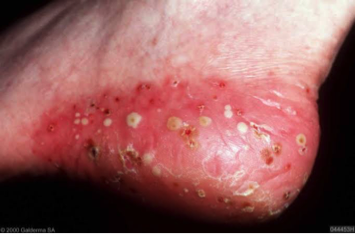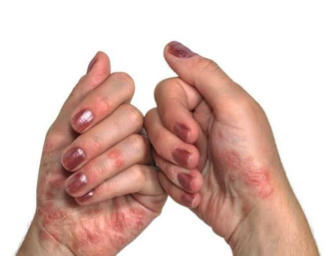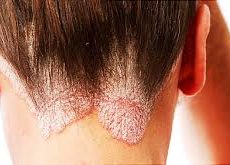Ever wondered what does Psoriasis look like? Psoriasis is caused by the rapid production of skin cells which results in patchy, red, scaly, and bumpy areas of skin. The most common affected areas are generally scalp, elbows, and knees. However, it is not uncommon to have Psoriasis at other parts of the body. There are different types of Psoriasis. You might see different varieties of Psoriasis based on the type you have and where you have it. Click here to know about Psoriasis creams.
Who Is Susceptible To Get Psoriasis?
There is no uniform criterion when it comes to having psoriasis. I have had it for years now. In fact, Psoriasis is quite common in the US and it affects about 125 million people around the globe, that’s 2-3 percent of total world population. It can occur at any age. Want to know more about what does Psoriasis look like? Keep reading.
Different Types Of Psoriasis
So, what does Psoriasis look like? Visually, Psoriasis looks like red or pink patches of thick, scaly skin. It may also look like bumps or raised skin. Here are a few different types of Psoriasis:
Psoriasis Vulgaris
Psoriasis Vulgaris a.k.a Plaque Psoriasis is the most common out of all the types of Psoriasis. About 80% of the people suffering from Psoriasis are diagnosed with this type. It is also called plaque Psoriasis. The affected areas have raised red skin which shows a flaky whitish layer on top of the scaly skin. The flaky layer is made up of dead skin cells which shed frequently. Here’s a picture to help you see what does Psoriasis look like:

For image source, click here
Guttate Psoriasis
This type of Psoriasis is generally salmon-pink in color. Are you wondering what does Psoriasis look like? Well, the affected area appears to have small bumps covered by a fine whitish layer. The scale is much finer than that of Plaque Psoriasis. Guttate Psoriasis is generally caused by a streptococcal bacterial infection. About 10% of people having Psoriasis are diagnosed with this type. Usually, the lesions are seen in people after a few weeks of suffering from strep throat. In some cases, this Psoriasis gets completely cured on its own.

For image source, click here
Inverse Psoriasis
It is also called Intertriginous Psoriasis. Red lesions appear mostly in areas such as armpits, under the breasts, around the genital and buttock areas, and/or in the abdominal folds. People having this type generally face irritation when sweats and skin rub together causing more inflammation. Here’s a preview of what does Psoriasis look like:

For image source, click here
Pustular Psoriasis
White pustules appear on the skin in this type of Psoriasis. These pustules have non-contiguous pus. The affected skin faces a repetitive cycle of skin redness, followed by the appearance of pustules and scales.

For image source, click here
Erythrodermic Psoriasis
This is quite a rare type of Psoriasis. It covers almost the entire body and the skin becomes excruciatingly inflammatory. Hence, people suffering from this type have an overall crimson skin that looks like rashes. It is constantly irritating and burns.

For image source, click here
Psoriasis of the Scalp
Scalp having Psoriasis is quite a common disorder. The scalp has a heavily-crusted, fine, scaly layer of skin. At times, the plaque scalp may come off in flakes or clumps. The condition is similar to seborrheic dermatitis with the exception that in the latter, the scales are greasy. Understand what does Psoriasis look like better through the picture:

For image source, click here
Psoriatic Arthritis
This is a special type of Psoriasis that sees the inflammation of the skin along with the joints. It can develop after 5 to 12 years after the beginning of Psoriasis. Around 5 to 10% of people suffering from psoriasis can develop Psoriatic Arthritis. Check out the image to know what does Psoriasis look like:

For image source, click here
Conclusion
You know now what does Psoriasis looks like. Understanding the type of Psoriasis can help you be more aware of the treatment required. Consult your doctor if you think you have Psoriasis. There may be no cure but there are definite treatments that can help you cope with the disorder effectively.
